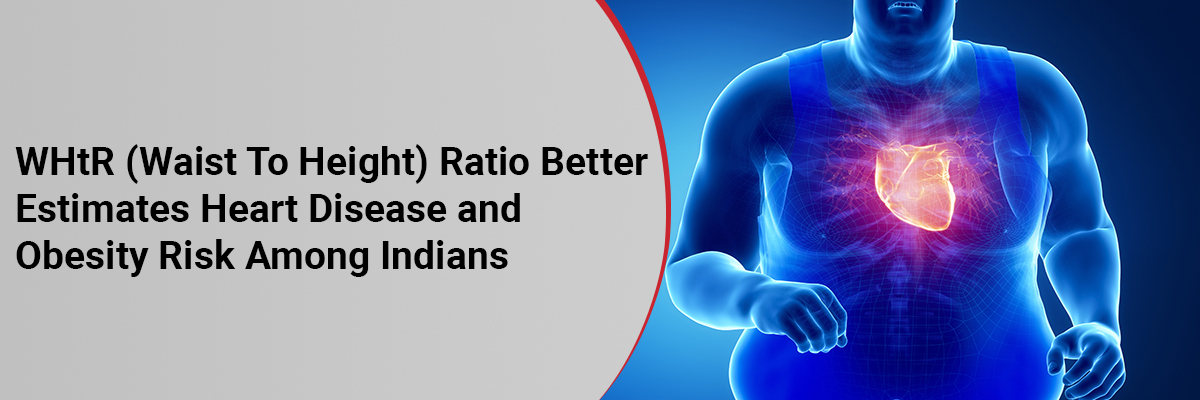
 IJCP Editorial Team
IJCP Editorial Team
WHtR (Waist To Height) Ratio Better Estimates Heart Disease And Obesity Risk Among Indians
Obesity is a rising public health concern as it precipitates metabolic diseases. Increased intake of energy-dense and ultra-processed foods and sugary diets coupled with a sedentary lifestyle causes obesity. This problem of obesity and the associated complications require immediate attention and addressing.
The conventional measure that determines whether an individual is overweight or obese is the body mass index (BMI). A BMI over 30 signifies obesity, irrespective of the proportion of body fats or muscles. Likewise, individuals with low muscle mass or low bone weight may be at high risk for developing metabolic diseases even at BMIs below the obesity cut-off. Moreover, BMI can estimate the cardio-metabolic disease risks at the population level but seems invalid at an individual level.
In fact, BMI – calculated as weight (in Kilograms)/height (in meters) squared, fails to categorize based on the body’s fat, muscle, and bone content. For instance, a very muscular individual may be fulfilling the obesity parameters despite having low body fat content. BMI-based parameters of ascertaining overweight or obesity were defined by studies conducted on Caucasians and are likely to prove faulty in other races.
Asian populations are associated with higher diabetes and cardiovascular disease risks––and at lower BMI levels. The higher propensity of developing ‘visceral adiposity’ or ‘abdominal obesity’ of these individuals heightens the risk of developing diabetes and heart disease.
A new parameter––waist-to-height ratio (WHtR)––has now been proposed, which can serve as an effective determinant of obesity and overweight across races. The waist-to-hip ratio (WHR) is deemed a better predictor of diabetes and cardiovascular disease than BMI; this index measures the degree of abdominal obesity. The waist-to-height ratio, on the other hand (both expressed in cms), has been shown to predict an individual’s predictor of cardio-metabolic risk even better than WHR.
The UK’s National Institute for Health and Care Excellence (NICE) suggested using WHtR instead of BMI for obesity categorization. According to this parameter, a ratio greater than 0.5 denotes a higher cardio-metabolic disease risk. This relationship is valid across races, age groups, and gender.

IJCP Editorial Team
Comprising seasoned professionals and experts from the medical field, the IJCP editorial team is dedicated to delivering timely and accurate content and thriving to provide attention-grabbing information for the readers. What sets them apart are their diverse expertise, spanning academia, research, and clinical practice, and their dedication to upholding the highest standards of quality and integrity. With a wealth of experience and a commitment to excellence, the IJCP editorial team strives to provide valuable perspectives, the latest trends, and in-depth analyses across various medical domains, all in a way that keeps you interested and engaged.









.jpg)










Please login to comment on this article